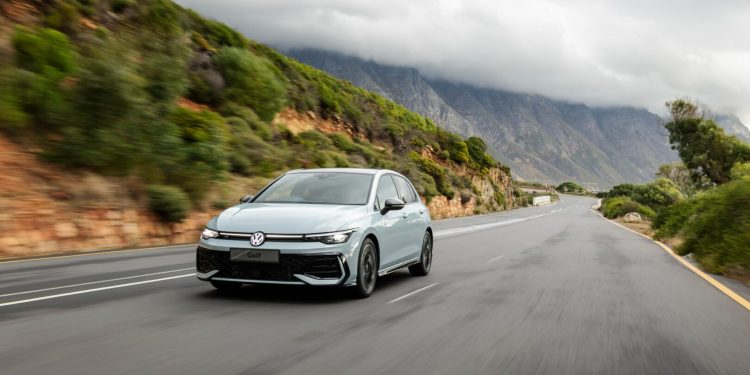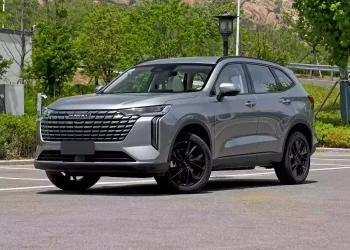When Volkswagen South Africa reintroduced the Golf 8.5 1.4TSI into a market now dominated by crossovers and budget SUVs, many were left wondering: is there still room for the once-beloved C-segment hatch? The answer is complicated. After shelving non-GTI Golf variants in 2021 due to dwindling demand, VW’s reversal feels both bold and ironic. The return of a “budget-friendly” Golf hatch raises questions about value, market relevance, and whether South Africans are still interested in this segment at all.
The Disappearing Act: What Happened to the C-Segment Hatch?
Over the last decade, South Africa’s love for family hatchbacks like the Ford Focus, Hyundai i30, and even the Toyota Corolla hatch has faded dramatically. Today, crossovers and Chinese SUVs rule the streets, while classic hatches are nearly extinct. According to recent NAAMSA stats, not a single C-segment hatch features among South Africa’s top 30 best-selling cars. The once-iconic Golf is now surrounded by high-riders and econoboxes, squeezed out of the mainstream by changing buyer behaviour and economic pressure.
The Golf’s Shift Upmarket—and Its Consequences
Volkswagen’s branding strategy hasn’t done the Golf any favours. What was once a go-to family hatch for middle-class South Africans has evolved into a premium product with a premium price tag. Just over a decade ago, the Golf 6 GTI cost around R368,000. Fast forward to 2025, and the pre-facelift Golf 8 GTI will set you back a staggering R853,400. Even the new Golf 8.5 1.4TSI starts at R580,000—without the features most buyers actually want.
To find more realistically priced second-hand options, check out listings on https://auto24.co.za/, where you can browse a wide selection of hatchbacks, sedans, and compact SUVs that often offer more value per Rand spent.
VW’s Conflicted Offering: Trims That Miss the Mark
Volkswagen’s local line-up of the Golf 8.5 1.4TSI includes four trims, but only the top two variants (with optional R-Line kits and up-to-date tech) feel truly competitive. The entry-level models, though more affordable, are bare-bones—missing key features that most buyers expect at this price point.
This all-or-nothing approach leaves potential Golf buyers in a tough spot: either stretch your budget R80,000 beyond the base model, or settle for a car that lacks creature comforts and styling enhancements. In today’s market, where cars like the Chery Tiggo 4 Pro come fully loaded for less, the value proposition just doesn’t add up.
Competition from the East: The Chinese Wave
The rapid rise of Chinese automotive brands in South Africa—such as Haval, Chery, Omoda, and Jaecoo—has added significant pressure to traditional players like Volkswagen. With new models like the Haval H7 offering SUV styling, spacious cabins, and tech-laden interiors at prices starting just over R600,000, South Africans are now spoiled for choice.
More importantly, many of these Chinese brands come fully specced out at entry-level prices, eliminating the need for expensive option packs. For a middle-class family trying to stretch every Rand, these vehicles make more practical sense. If you’re exploring what’s new on the market, stay updated with reviews and guides on https://imotonews.co.za/, your hub for South African automotive insights.
What’s VW Thinking?
It’s baffling that Volkswagen didn’t fully anticipate this new market dynamic. While other brands are adapting—downsizing dealerships or expanding into mall-style showrooms—VW seems stuck trying to sell nostalgia. Yet in 2025, nostalgia alone can’t justify a half-million-Rand hatchback, especially when alternative options are larger, better equipped, and often more affordable.
Where Does the Golf Fit in Now?
In today’s economic climate, the Golf 8.5 feels like a relic from a different era. It’s not that the car lacks merit—Volkswagen’s build quality, driving dynamics, and badge appeal remain strong. But the market has shifted. Buyers are choosing practicality, value, and modern design over brand loyalty.
For every Golf VW hopes to sell at R580,000, there are multiple rivals—often with more space, features, and road presence—at the same or lower price point. This creates a difficult sales pitch, even for a nameplate as iconic as the Golf.
Conclusion: A Lesson in Changing Times
The reintroduction of the Golf 8.5 1.4TSI into the South African market reads more like a nostalgic throwback than a strategic relaunch. Volkswagen’s gamble hinges on there still being enough buyers who value the Golf’s heritage over the bells and whistles that come standard in newer competitors. But in a country where affordability and practicality reign supreme, that’s a risky bet.
Whether you’re a die-hard VW fan or simply exploring your options, it’s clear that the landscape of South African motoring is evolving—and quickly. And while there’s still room for trusted classics like the Golf, they’ll need to work much harder to prove their worth in this bold new era.
🛠 Need practical car care advice? Read more here for essential tips on maintaining your vehicle on a budget.
🚗 Looking for your next ride? Explore hundreds of used car listings at https://auto24.co.za/—from hatchbacks to crossovers, there’s something for every budget.





